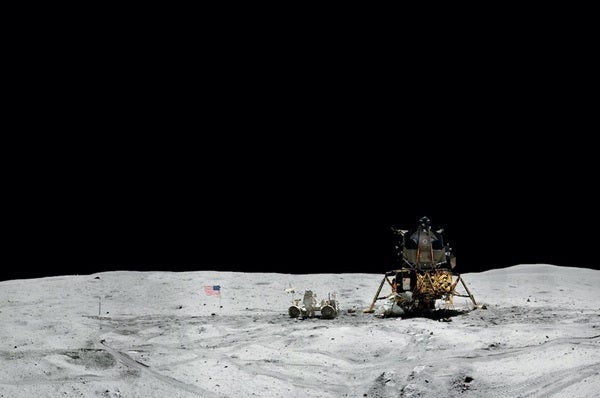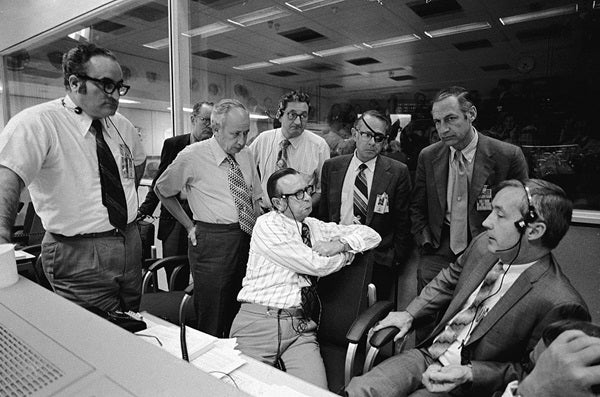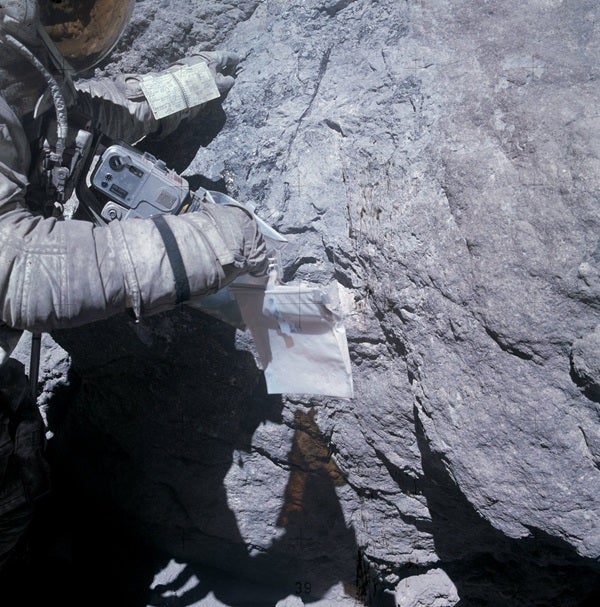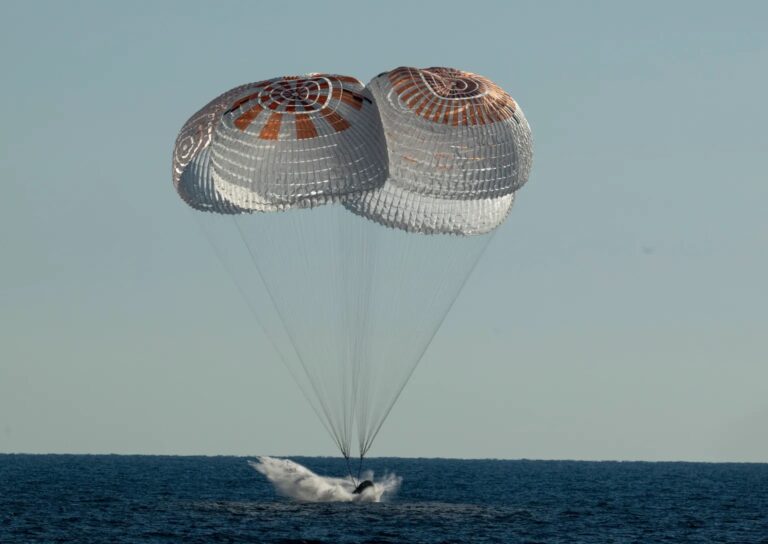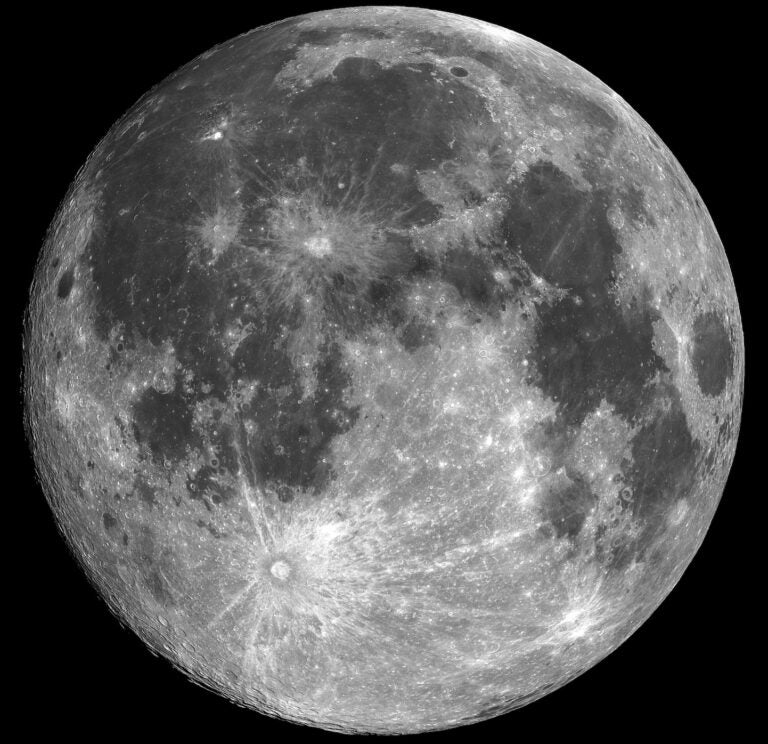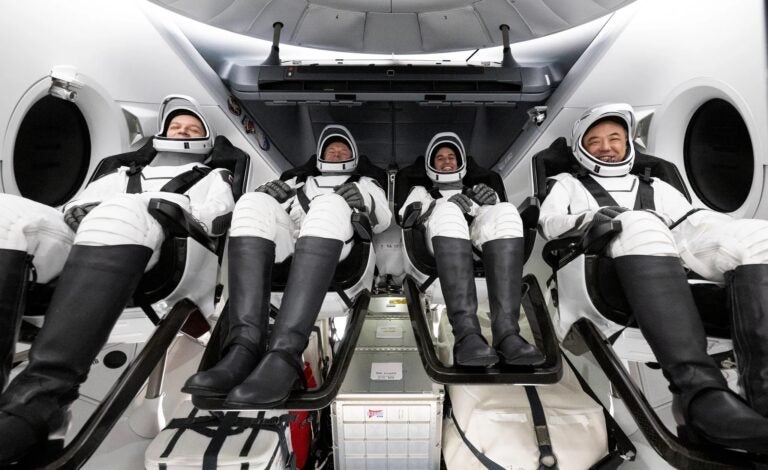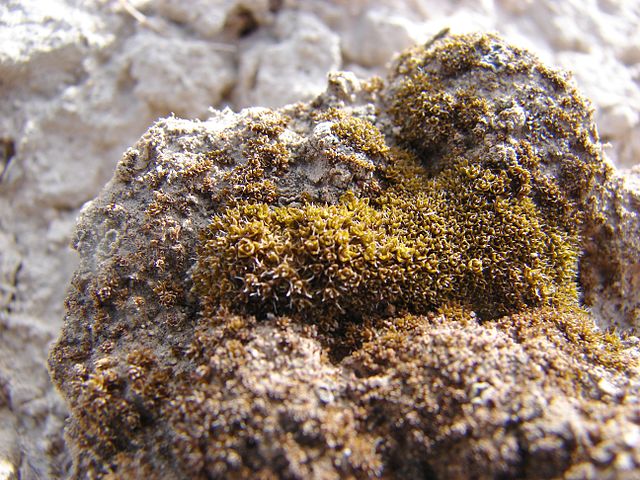Fifty years ago, Apollo 16 almost didn’t land on the Moon.
On April 20, 1972, two spacecraft danced in tight formation, high above a ubiquitous gray and tan lunar landscape. Aboard the Lunar Module (callsign Orion), astronauts John Young and Charlie Duke steeled themselves for a tricky descent to land in the Moon’s rugged, equator-hugging mountains, 30 miles (48 kilometers) north of the worn crater, Descartes. Sampling the lunar highlands, it was hoped, might yield volcanic rocks and insights into the Moon’s past.
Fate, though, had another card to play. Inside the Command/Service Module (callsign Casper), piloted by Ken Mattingly, all was not well. After undocking from Orion, Mattingly had to adjust his ship’s orbit around the Moon from elliptical to circular for three days of surface observations. To do that, he needed to fire Casper’s engine. But when Mattingly tested its controls, the ship unexpectedly shuddered, as if he was riding down a rickety railroad track.
It was unwelcome news. If Casper’s engine was damaged, hopes of Young and Duke landing on the Moon would evaporate. And two years after the near-disaster of Apollo 13, any whiff of failure could prompt nervous politicians and a jittery NASA top brass to cancel the sole remaining lunar voyage, Apollo 17.
Apollo 16 makes it to the Moon
Back in 1970, Young, Duke, and Jack Swigert were Apollo 13’s backup crew when Duke caught German measles. Since the backups worked closely with prime crewmen Jim Lovell, Fred Haise, and Mattingly, both crews risked infection. Mattingly lacked immunity to measles, and fearful that he might get sick in space, NASA opted to go with Swigert instead. A year later, Young, Duke, and Mattingly were tapped for Apollo 16.
But illness was never far away. Shortly before launch, Duke came down with bacterial pneumonia and doctors found elevated levels of bilirubin (a possible indicator of hepatitis) in Mattingly’s blood. Both men were cleared to fly. But on launch morning, April 16, 1972, Haise couldn’t resist one final prank. As Duke climbed into the spacecraft, teetering atop the 36-story Saturn V rocket, he spotted a note taped to his seat. In Haise’s handwriting, it read: “Welcome, Typhoid Mary.”
Apollo 16’s four-day trek to the Moon proved uneventful. But after Orion and Casper parted company in lunar orbit, the engine glitch stalled everything. They flew in formation for four hours as Mission Control figured out a solution.
At length, a landing was cautiously approved. On April 21, 1972, Young and Duke landed Orion on an undulating plain nestled between a pair of half-mile-wide (800 meter) rayed impact craters, North Ray and South Ray. To the southeast, domical Stone Mountain rose a ponderous 1,800 feet (500 m) above the plain.
“Ol’ Orion is finally here,” drawled Duke, like a kid at a fair. “Fan-tas-tic!”
But the delayed landing threw a carefully choreographed exploration plan into disarray. The excited astronauts were told to sleep before their first Moonwalk. Duke’s mind was racing, so he took a sleeping pill. Young slept like a brick.
Revealing the Moon’s history
The next morning, Young hopped down Orion’s ladder and planted his boots into alien soil, raising both fists in triumph. “There you are, our mysterious and unknown Descartes highland plains,” he breathed. “Apollo 16 is gonna change your image.”
And that image was predicted to be a volcanic one. Earlier Apollo crews found basalt rocks on the Moon, but they mainly landed on flat maria terrain, laid only a few hundred million years ago. Sampling the more ancient highlands offered a window into the Moon’s past, stretching back 3.5 billion years or more. Geologists were so certain that Descartes harbored volcanic rocks that a good chunk of Young and Duke’s training was done in volcanic locales on Earth, including Hawaii and Arizona.
They deployed the battery-powered Lunar Rover to facilitate exploration on wheels. Over three days, the rover ferried them across 16.6 miles (26.7 km) of hummocky terrain. But the glaring Sun at their backs bleached the surface into a featureless blanket. Landmarks clearly visible on their maps went unseen until the last moment, obliging Young to drive no faster than a couple miles per hour, lest he run over a scarp.
The pair planted the U.S. flag and assembled a set of scientific instruments. Duke drilled holes to implant probes for a surface heat-flow investigation. But Young, unable to see his boots while encased in his bulky space suit, accidentally tripped over a cable and ruined the experiment. With time against them, they had little option but to press on.
Volcanic rocks proved frustratingly elusive. They tried finding them at the thousand-foot-wide Flag Crater, then at Plum (affectionately named by Young for his daughter), Spook, and Buster craters. None revealed the merest hint of volcanism. Instead, the Descartes hills seemed universally composed of ejecta hurled across the surface by countless ancient impacts.
Ascending Stone Mountain’s flank, they reached an elevation of 500 feet (150 m), higher than any other Apollo explorers. This vantage point furnished stunning views of South Ray Crater, a yawning bowl more than five times wider than a football field. Its hinterland was too rough for the rover to negotiate safely, but Young and Duke sampled one of its bright rays.
On their third and last Moonwalk, the pair headed for North Ray, whose steep walls plunged 700 feet (215 m) from the rim to an unseen rock-strewn floor. They chipped shards from the shadowed face of a huge boulder, dubbed House Rock. Duke joked that if he sampled a rock in West Texas like that, he’d earn a rattlesnake bite for his trouble. Another specimen (named ‘Big Muley’ for geologist Bill Muehlberger) weighed 26 pounds (11.8 kilograms). These rocks dated back to 3.92 billion years, far older than the earliest life on Earth.
Expect the unexpected
In total, Young and Duke spent 71 hours on the Moon, and 20 hours walking across its surface.
After returning to lunar orbit, and a happy Mattingly aboard Casper, the homeward journey was a quiet one. Mattingly made an 84-minute spacewalk 50,000 miles (80,000 km) from the Moon to retrieve photographic film, almost losing his wedding ring in the process.
Apollo 16’s success was hard-won. The lack of volcanic rocks at Descartes underscored a central tenet of exploration: to expect the unexpected. And through its trials, ‘Sweet Sixteen’ hammered home another key truth. For as the late John Young once remarked: “To make progress, you have to take risks”.
That lesson will undoubtedly be on the minds of the next generation of lunar explorers when they plant their own boots in alien soil as part of the Artemis program.

